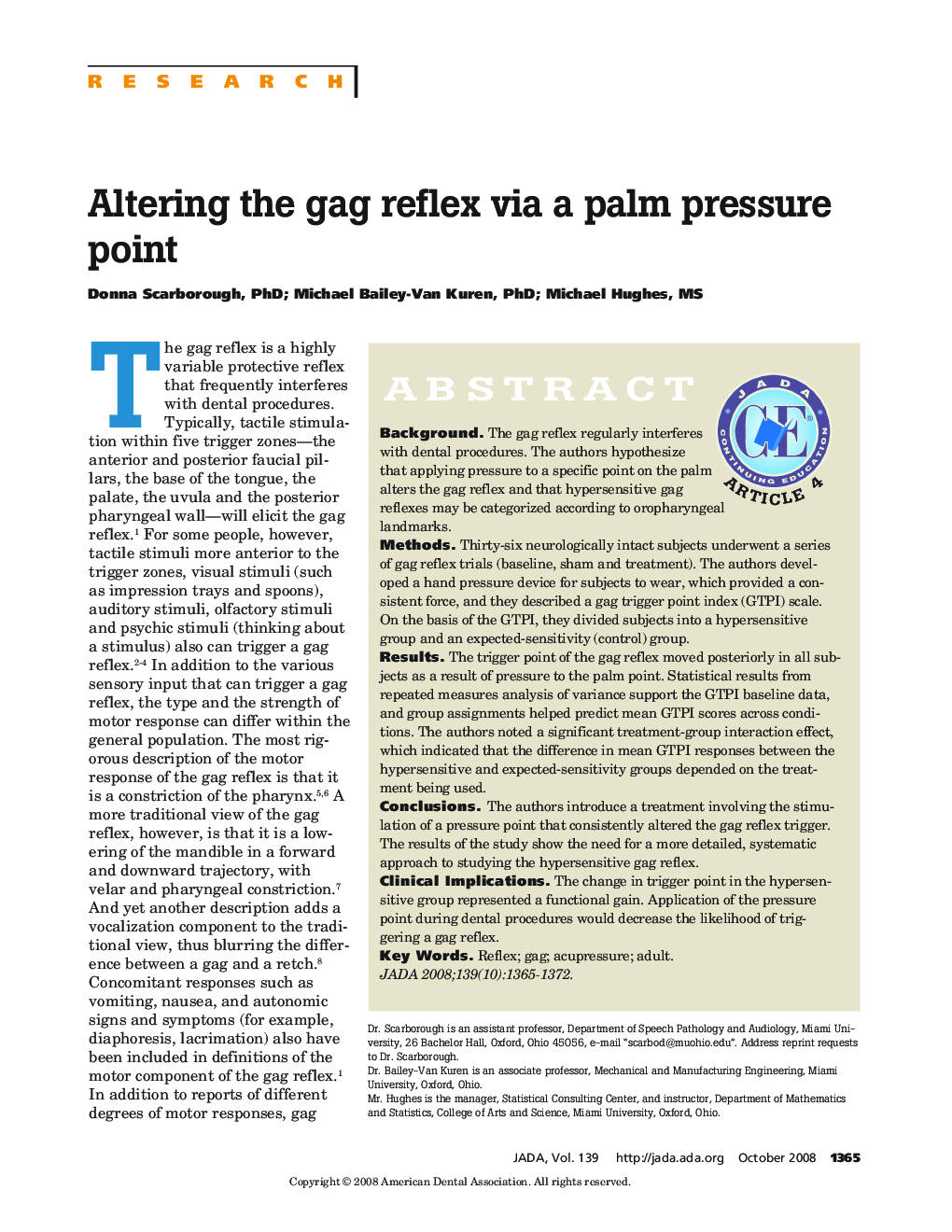| Article ID | Journal | Published Year | Pages | File Type |
|---|---|---|---|---|
| 3139179 | The Journal of the American Dental Association | 2008 | 8 Pages |
ABSTRACTBackgroundThe gag reflex regularly interferes with dental procedures. The authors hypothesize that applying pressure to a specific point on the palm alters the gag reflex and that hypersensitive gag reflexes may be categorized according to oropharyngeal landmarks.MethodsThirty-six neurologically intact subjects underwent a series of gag reflex trials (baseline, sham and treatment). The authors developed a hand pressure device for subjects to wear, which provided a consistent force, and they described a gag trigger point index (GTPI) scale. On the basis of the GTPI, they divided subjects into a hypersensitive group and an expected-sensitivity (control) group.ResultsThe trigger point of the gag reflex moved posteriorly in all subjects as a result of pressure to the palm point. Statistical results from repeated measures analysis of variance support the GTPI baseline data, and group assignments helped predict mean GTPI scores across conditions. The authors noted a significant treatment-group interaction effect, which indicated that the difference in mean GTPI responses between the hypersensitive and expected-sensitivity groups depended on the treatment being used.ConclusionsThe authors introduce a treatment involving the stimulation of a pressure point that consistently altered the gag reflex trigger. The results of the study show the need for a more detailed, systematic approach to studying the hypersensitive gag reflex.Clinical ImplicationsThe change in trigger point in the hypersensitive group represented a functional gain. Application of the pressure point during dental procedures would decrease the likelihood of triggering a gag reflex.
